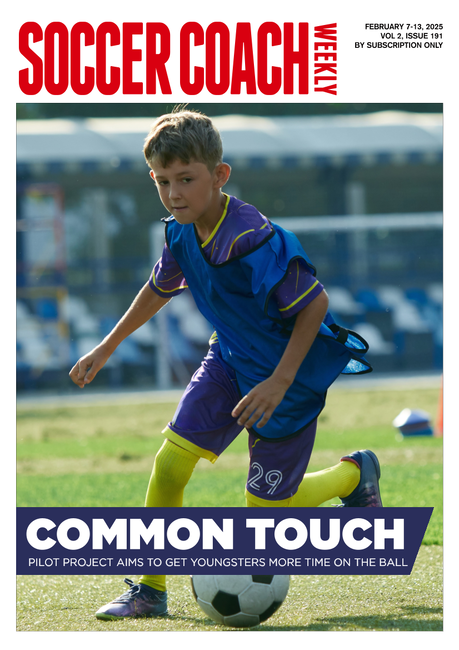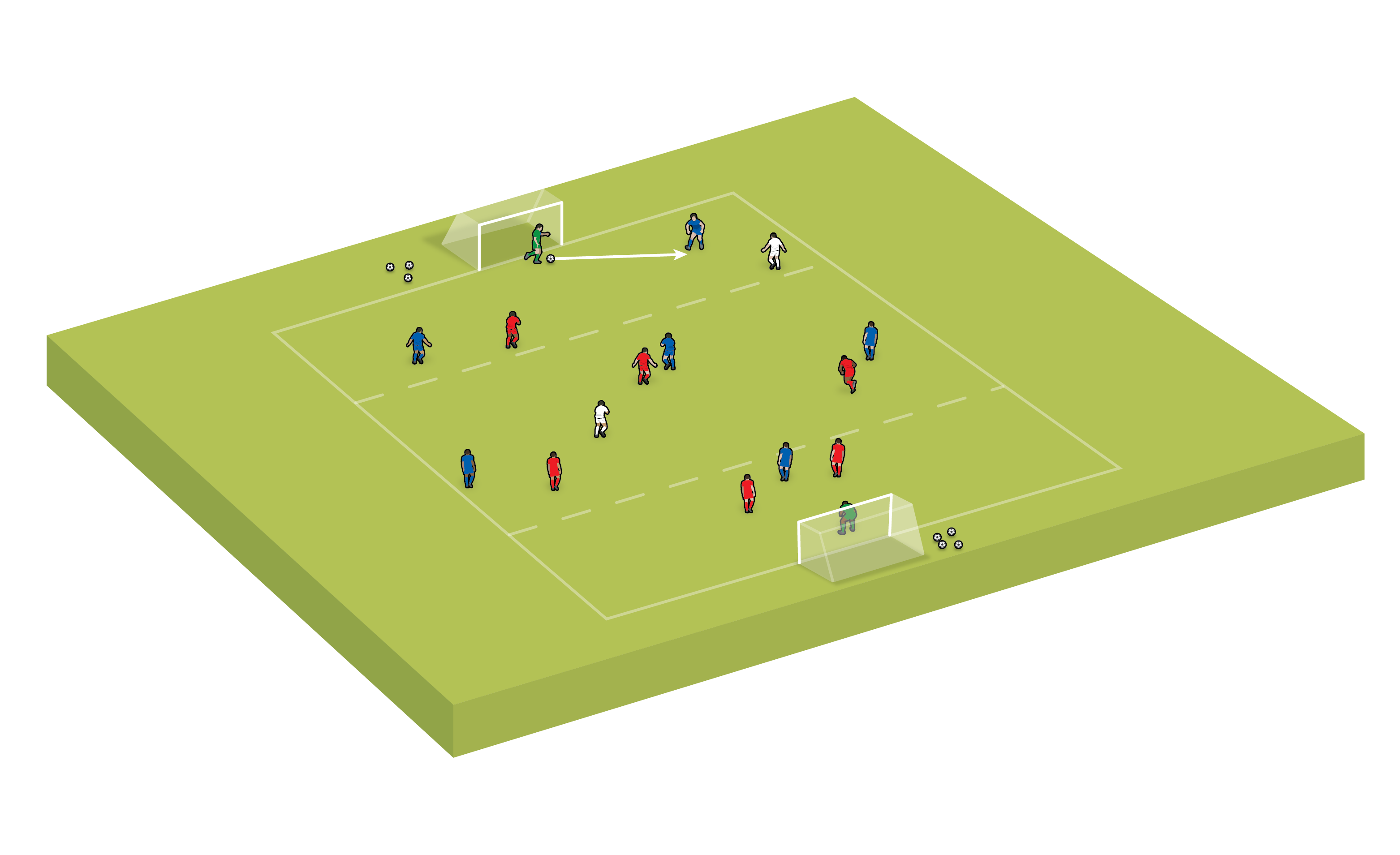Turn your players on to non-verbal signals
Messages players send with their movement and passing are as vital as talking, says UEFA B coach and Women’s Soccer Coaching editor Hannah Duncan.
As coaches, we might often bang on to our players about the importance of ‘scanning’, ‘checking shoulders’ or ‘painting pictures’. I know I’ve often been like a broken record about it with youth players.
But while we might place emphasis on the receiver making quick, early and informed decisions as to their next action (‘Can I turn?’, ‘Who’s making a run in behind?’, ‘Where’s the space to drive into?’), it is equally important to equip players with the skills and knowledge to support their team-mate’s thought process.
For me, decision-making is a key attribute in players. The value of being able to ping a pinpoint 40-yard pass or make a perfectly timed last-ditch challenge is diminished if, for the most part, the player is making poor decisions in other moments.
And while a lot of the work we do with players involves developing individuals to make good decisions, we should look to support them by also developing their team-mates’ decision-making.
Verbal communication is key - but of equal, and in some cases greater, value is non-verbal communication and the messages players send with their pass or movement off the ball.
Youri Tielemans’ strike to win the 2021 FA Cup final for Leicester City was undoubtedly a great goal, but not many will recall he was set on his way by a pass from Luke Thomas.
The defender played to Tielemans’ back foot, non-verbally communicating that space was available to turn and drive into. Thomas’s weight of pass also enabled his team-mate to take a positive first touch, under control, into this space.
Sending these types of messages is important across the whole pitch, whether playing out from the back against a high press, trying to play through compact midfield areas or looking to create an opening in and around the penalty area.
How can we introduce this to our sessions? Well, there are a whole host of opportunities that will naturally occur within each and every session.
In a warm-up rondo, players will have the decision of whether to bounce back to the original passer, turn and switch the play to the other end-line or play a defence-splitting pass across the area.
This will be determined by the position of the defenders and their team-mates, but also the type and weight of pass they receive, which can serve to give them early information to inform their next move.
You could even design the session with this outcome in mind, by playing in tighter areas or using end zones to give players the option to either turn and drive forwards, or set back to then peel off and run in behind.
However you might want to coach your players and instil ideas and principles of non-verbal communication into their game, it will prove a vital asset to them as individuals and collectively as a team.
KEY QUESTIONS TO ASK YOUR PLAYERS
If I pass to my team-mate’s back-foot, what information might I be giving them?
What about if I pass to their front foot?
What does my weight of pass tell my team-mate about what they might be able to do next?
If I’m moving off the ball to receive it, what might my body shape look like if I want the ball passed to my feet?
How will that change if I want the ball played into space for me to run on to?
Related Files
Newsletter Sign Up
Coaches Testimonials

Gerald Kearney, Downtown Las Vegas Soccer Club

Paul Butler, Florida, USA

Rick Shields, Springboro, USA

Tony Green, Pierrefonds Titans, Quebec, Canada
Subscribe Today
Discover the simple way to become a more effective, more successful soccer coach
In a recent survey 89% of subscribers said Soccer Coach Weekly makes them more confident, 91% said Soccer Coach Weekly makes them a more effective coach and 93% said Soccer Coach Weekly makes them more inspired.
*includes 3 coaching manuals
Get Weekly Inspiration
All the latest techniques and approaches
Soccer Coach Weekly offers proven and easy to use soccer drills, coaching sessions, practice plans, small-sided games, warm-ups, training tips and advice.
We've been at the cutting edge of soccer coaching since we launched in 2007, creating resources for the grassroots youth coach, following best practice from around the world and insights from the professional game.







